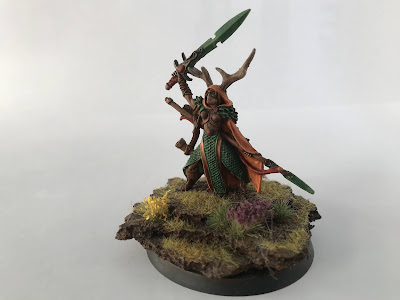It is all but guaranteed that any civilised settlement will possess within its boundaries at least one tavern, hostel or other such communal centre. These are places for locals and travellers to gather, drink and, of course, sing.
Many inns will allow - encourage, even - skilled bards and minstrels to entertain the patrons. Happy customers spend more freely and if the musician is even halfway competent then the least they can expect in return is food and lodgings for the night.
Of course, in an age in which news travels swiftly only for those with coin to tempt it, most folk rely on the accumulated knowledge of history to guide their decisions and give them hope in lean times. The "oral tradition" scholars call it, but this diminishes the spiritual depth of joining one's voice to a choir which stretches back generations and keeps fresh the wisdom earned by those who are long since departed.
On occasion, talented individuals will group together in performing troupes, roaming the lands seeking fame and, more than this, fortune.
Such a band emerged from the foothills of Jeldenburg and has since proven worthy of a mention in the chronicles of the Tallowlands...
Founding members
Anbeth Willowbrook
A daughter of the Oakleafen, Willowbrook is an accompanist par excellence. Had she been born to human or dwarfen parents her talents would almost certainly have been lauded and nurtured. However, the wood elves are a more self-centred folk and respect only the virtuoso and the soloist. Therefore her sympathetic and collective approach was sneered at and considered somewhat inferior.
After a time, Willowbrook came to realise that she would never find musical fulfillment within the boughs of Oakhall and undertook to depart the forest, never to return until her music was considered fit for the halls of lords and nobles.
This happened within a week.
After leaving Oakhall, she travelled west towards Jeldenburg. On her first night in human lands she arrived at the town of Yuldpass where, purely by chance, she met Horst vander Jeld, royal minstrel to the Demiprince Arnhuus. He invited her to join him in performing at the tavern that evening; after the opening, unrehearsed song he insisted that she perform with his troupe at the palace the following evening.
Despite being a little suspicious she agreed and was stunned to discover how highly humans valued her skill at weaving rhythms for the other musicians to work with. She remained in residence at the palace for a number of weeks - unsure of whether she could really return return to Oakhall so soon, or if she even wanted to - until one day she met Helen Highwater and chose to join her in the wandering life.
It is unclear whether Anbeth is her true name or a pseudonym to help her avoid the stigma of association with the belligerent Oakleafen when in human lands.

Helen Highwater
A gnome from the near East, Highwater travelled the Jeldenburg circuit for some time before her meeting with Anbeth Willowbrook. Despite her stature she has a strong and charming voice which, coupled with her easy humour and excellent sense of timing, makes her an ideal frontwoman for the band.
She is not the most capable lyrist, but in truth she plays it only to help her stay in tune when the crowd gets rowdy.
Tomlin Picc
Rei Barleysheaf
Later members
An ex-rogue, his thieving days came to an abrupt halt when he was struck by a runaway cart while crossing the road ("I used to be an adventurer, but then I took a barrow to the knee"). In need of alternative work, he discovered that dextrous fingers were well employed in playing the mandolin.
Confident by nature, he is an excellent sidekick to the egregious Helen Highwater and a well-matched foil for the more understated Anbeth Willowbrook.
His signature style is to play using the neck of a glass bottle or an appropriately-sized bone from a vanquished foe (or, more likely, last night's chicken dinner). This is a technique he first encountered during the band's brief but eventful stay with Clan Morris.
As an aside, this model was an early attempt at using the grisaille method of painting.


















































